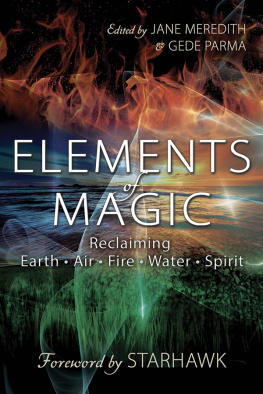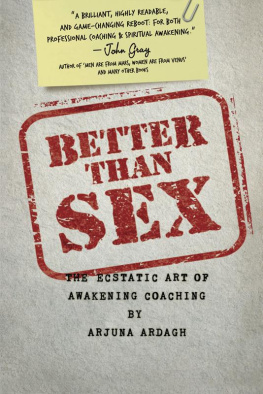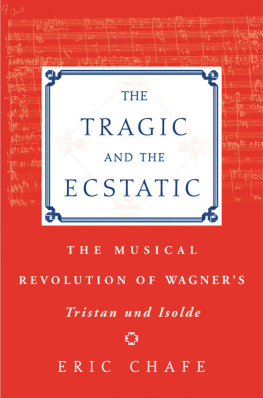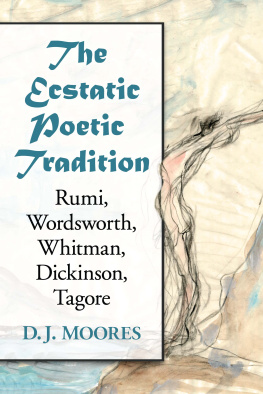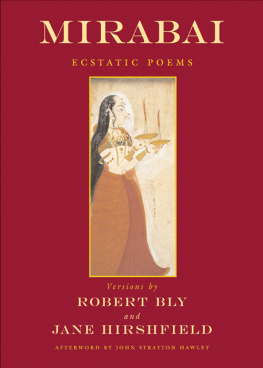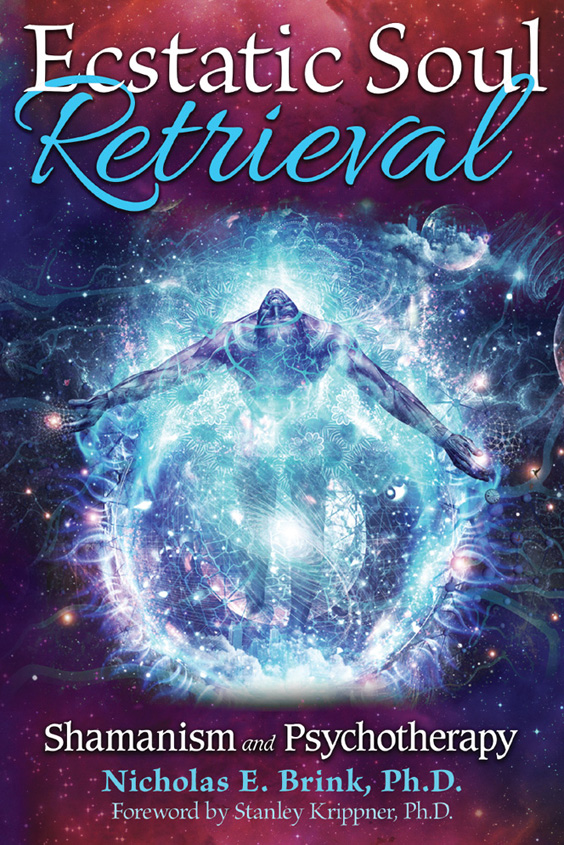
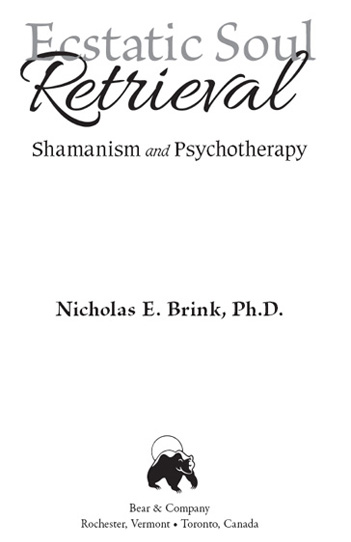
Ecstatic Soul
Retrieval
In Ecstatic Soul Retrieval ancient spiritual channels are opened so the inherent healing wisdom of the body comes alivein a modern clinical setting. Upon being guided into expanded states of consciousness, clients transform core negative and limiting beliefs to create a more connected and Earth-honoring life. You will be inspired as you read this book. Brinks use of ecstatic trance in psychotherapy is as natural and replicable as it is brilliant.
LLYN ROBERTS, COAUTHOR OF SPEAKING WITH NATURE AND AUTHOR OF SHAPESHIFTING INTO HIGHER CONSCIOUSNESS
Drawing upon his prior work with the use of ancient shamanic postures and drumming to produce ecstatic trance where stories come forward, Brink shows how these techniques facilitate the healing process in a wide variety of clinical situations. The richness of this book comes from this bridging of shamanic and psychotherapy practices and, perhaps even more, from the fountain of illustrative stories he presents.
RAYMOND HILLIS, PH.D., PROFESSOR EMERITUS OF COUNSELING AT CALIFORNIA STATE UNIVERSITY, LOS ANGELES
By incorporating various physical postures to enhance particular types of shamanic journeying/trance work, Brink extends the boundaries of the mind-body connection. His detailed case histories show how powerful this work can be in helping clients get unstuck. By learning to access their own imagination and to draw from the richness of archetype in the collective unconscious, Brinks clients discover ways to create better, more resourceful life stories, replacing old, tired, impoverished ones. Thank you, Nick, for this valuable guide to an integrative and inclusive approach to hypnosis and ancient shamanic practices!
PETER L. BLUM, CERTIFIED INSTRUCTOR FOR THE NATIONAL GUILD OF HYPNOTISTS AND FACULTY MEMBER OF DR. LEWIS MEHL-MADRONAS COYOTE INSTITUTE
Ecstatic Soul Retrieval will be invaluable for all students of the ecstatic trance postures who are interested in the psychological impact of the method. The case studies in Nicks book provide us with a wide array of material to help us understand how to use the trance postures in the field of therapy. This book will be of great help in teaching more people about the healing power of the ecstatic trance postures.
ANNETTE KI SALMEN, M.A., TEACHER AND TRAINER OF THE CUYAMUNGUE METHOD
Acknowledgments
I would like to acknowledge the Cuyamungue Institute, which promotes the original research and findings of Felicitas Goodman, who founded the institute in 1978. Dr. Goodmans work, known today as the Cuyamungue Method, focuses on the use of ancient sacred practices and postures that, when properly used, provide an experience that creates a doorway to an ecstatic experience of expanded reality. Dr. Goodman captured the essence of her work and findings in the book Where the Spirits Ride the Wind. I received formal training in the history and proper use of the Cuyamungue Method at the Cuyamungue Institute in Santa Fe, New Mexico. To learn more about Dr. Goodmans original work in ecstatic trance and her development and use of the Cuyamungue Method, visit the Cuyamungue Institutes website, www.cuyamungueinstitute.com.
Also I greatly appreciate the work of Meghan MacLean and the editorial staff of Bear & Co., who have given me considerable direction and assistance in organizing and editing this book.
Foreword
Stanley Krippner, Ph.D.
Obsessive thinking and compulsive behavior are two of the most difficult problems that clients bring to their psychotherapists. Obsessive thoughtsfor example, Everyone I meet must like me or I must be on my guard all of the timeand compulsive behavior like drug or alcohol addiction, sexual promiscuity, or road rage affect a number of people and are the source of considerable suffering in this world. Most psychologists and psychotherapists attempt to replace the repetitive, dysfunctional self-talk heard in the narratives their clients with these disorders tell them with positive, life-affirming thoughts or counter-narratives. My old friend Milton Erickson, a renowned psychiatrist, referred to these changes as shifts, reorganizations of a persons inner and outer lives. Erickson used mental imagery, hypnosis, and dream work with his clients to effect shiftsthe same resources as those described by Nicholas Brink in this provocative book, Ecstatic Soul Retrieval. However, Brink adds another component, ecstatic trancetrance induced with the beating of a drum as used by tribal shamansto this list of effective resources. He draws from the research of anthropologist Felicitas Goodman, who discovered the power of body postures in the trance experience, postures she believed were used by the tribal shamans of different cultures throughout time. Though the use of shamanic body postures and drumming may seem quite unusual and unexpected in psychotherapy, Brink offers an effective and meaningful transition for bringing these tools to the therapeutic setting.
For millennia, the experiences of ecstatic trance, dreams, storytelling, and hypnotic-like techniques have been used by shamans to reduce suffering, deal with pain, and alleviate community discord. Over the years I have observed dozens of shamans from all six inhabited continents and have noticed that their indigenous healing methods employ all of these resourcestheir clients dream reports, their clients imagination, and their clients ability to respond to suggestion.
For two decades I worked with Rolling Thunder, an intertribal medicine man who resided in Nevada. On one of my visits to his home he was listening to a young mans narrative of a repetitive dream, a scenario in which a white buffalo was locked in mortal combat with a black buffalo. I expected Rolling Thunder to connect the dream with a Native American prophecy concerning the birth of a white buffalo, and this approach might have been appropriate if his client, Leonard, had been Native American instead of Euro-American. Instead, Rolling Thunder listened carefully as Leonard related the dream and described the anxiety he felt upon awakening. Then the medicine man asked Leonard to close his eyes and imagine that he was observing the two fighting animals. At this point he asked, What part of yourself do you associate with the white buffalo and what part with the black buffalo? Leonard remained silent for a few minutes and then replied, The white buffalo is that part of me that wants to do important work in the world, that wants to honor and heal Mother Earth, and that wants to improve the living conditions for the needy people on the planet. The black buffalo is more practical and rather selfish. It is that part of me that wants to get a good job so that I can get married, buy a house, and raise a family. During my waking hours, I am torn between those two goals, and now I understand that I am bothered by this conflict even while I am asleep. Rolling Thunders counternarrative continued as he asked Leonard to look around at the pasture where the two buffalo were fighting. Leonard responded that the pasture went on as far as the eye could see. Rolling Thunder asked, Dont you think there is enough room in the pasture for both buffalos? I have been working as a brakeman for the railroad for many years, and that is how I have supported my family. But that did not stop me from learning about Native American medicine and using it to help people who came my way. Soon I will start receiving a pension from the railroad and then I can devote even more of my time to following the Red Road of service. When Leonard opened his eyes, he looked as if he had attained a type of inner peace. Apparently, he had experienced what Erickson would call a shift and realized that his two goals were both worthy and not incompatible with each other.
Next page

